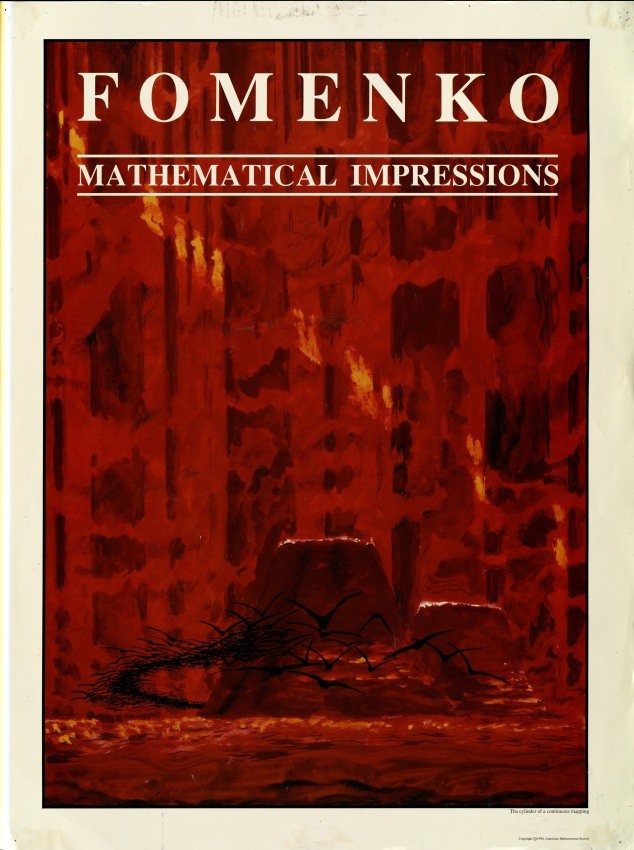The cylinder of a continuous mapping
No. 51, 1967 (Homotopic topology)
India ink and gouache on paper, 30.5x43 cm.
From deep within the pockets and caverns of a vast and far-off space, bat-like creatures soar together, spreading their wings, traversing the atmosphere, winding their way through a forest of cylindrical shapes that rise from a surface representing Earth. The soaring creatures journey past, exploring, navigating, and in some sense investigating the region they must traverse. But the structure of this space has its own story. It is built around vertical cylinders that carve up and define the region. They are cylinders of a continuous mapping, often used in homotopy topology. They are created by attaching each cylinder's base to a space with a mapping function. As a result, each cylinder grows larger and is represented as a truncated cone on the horizon. Shown too are infinite pillars, which represent orbits of specific translations in Euclidean space.
